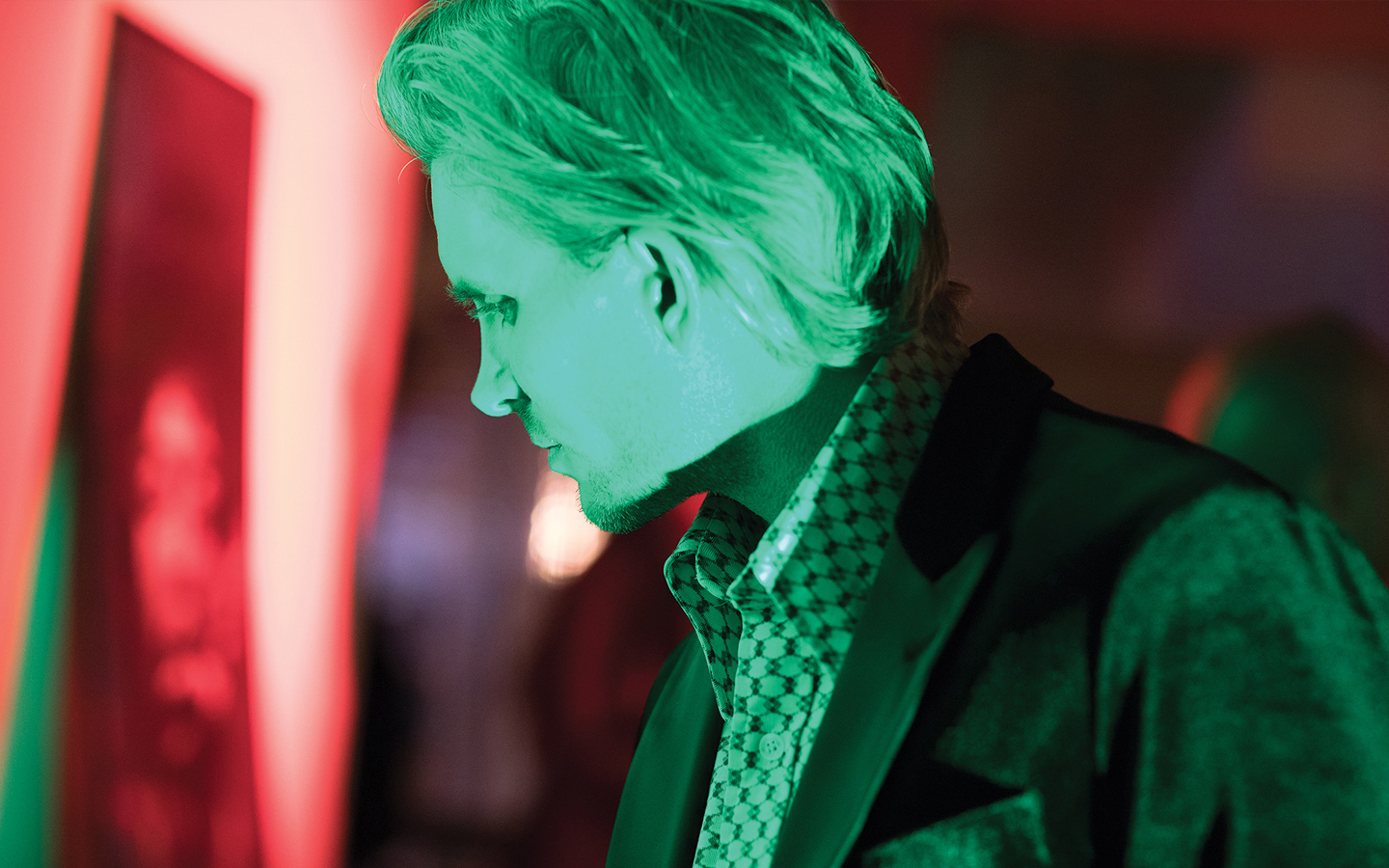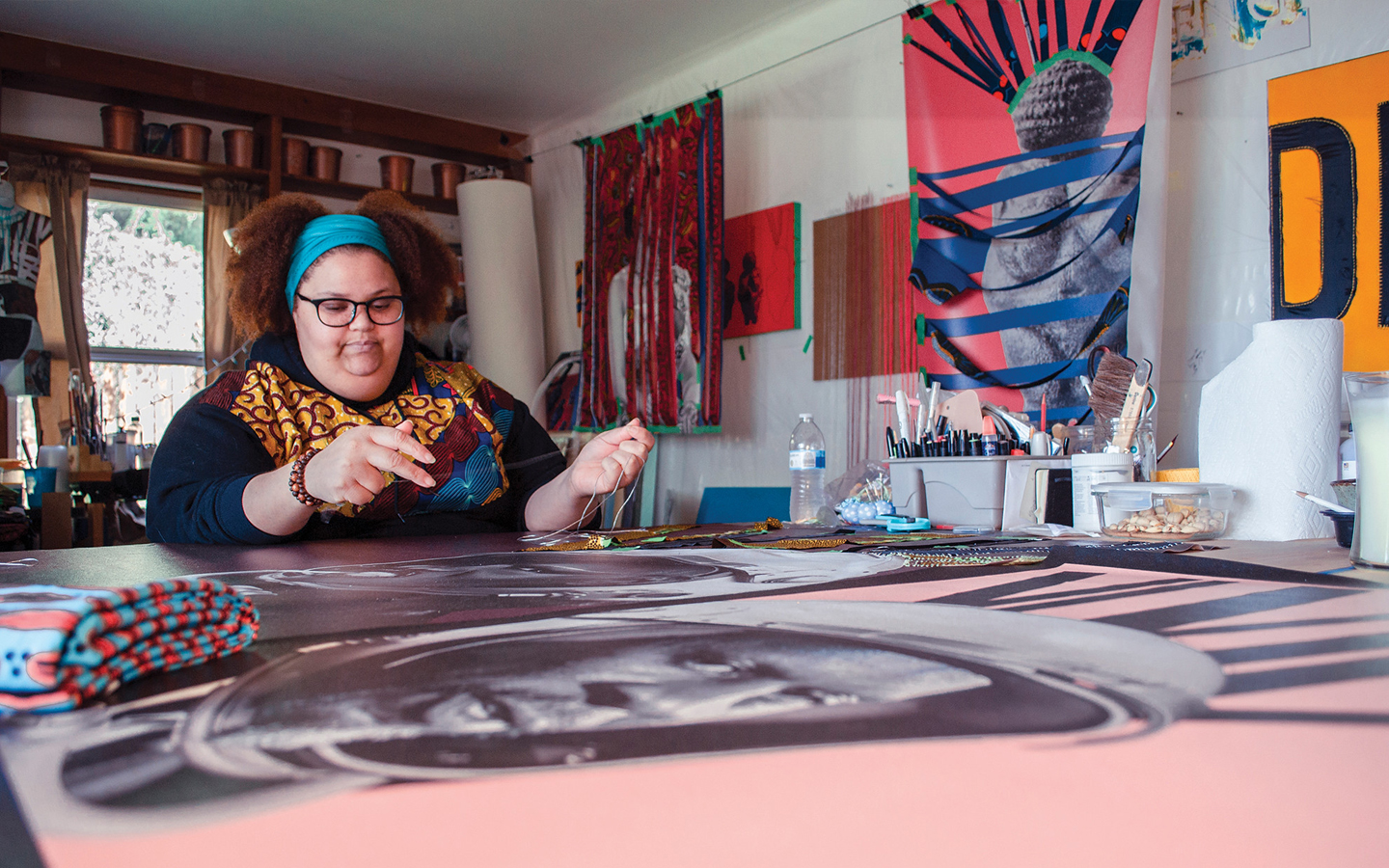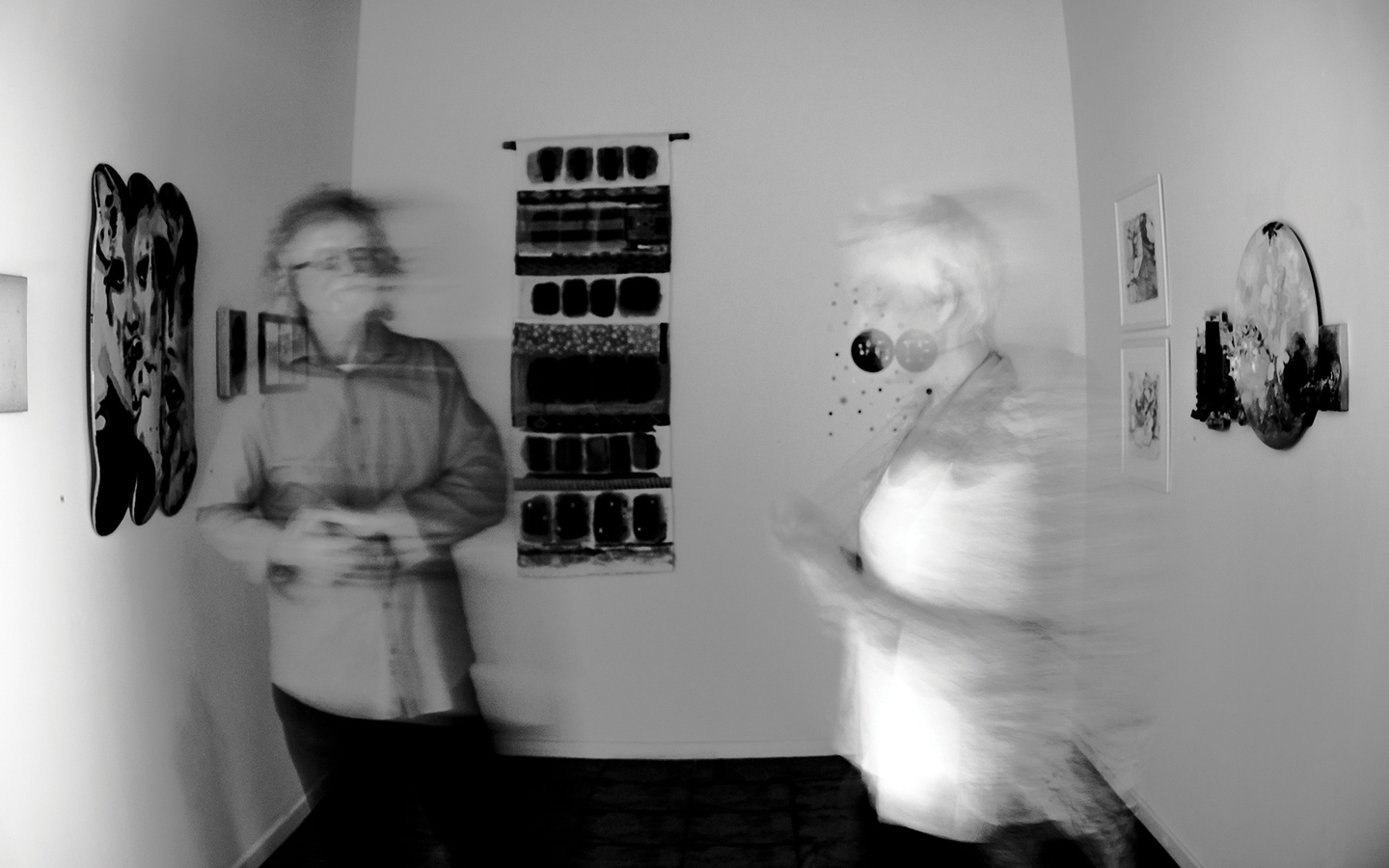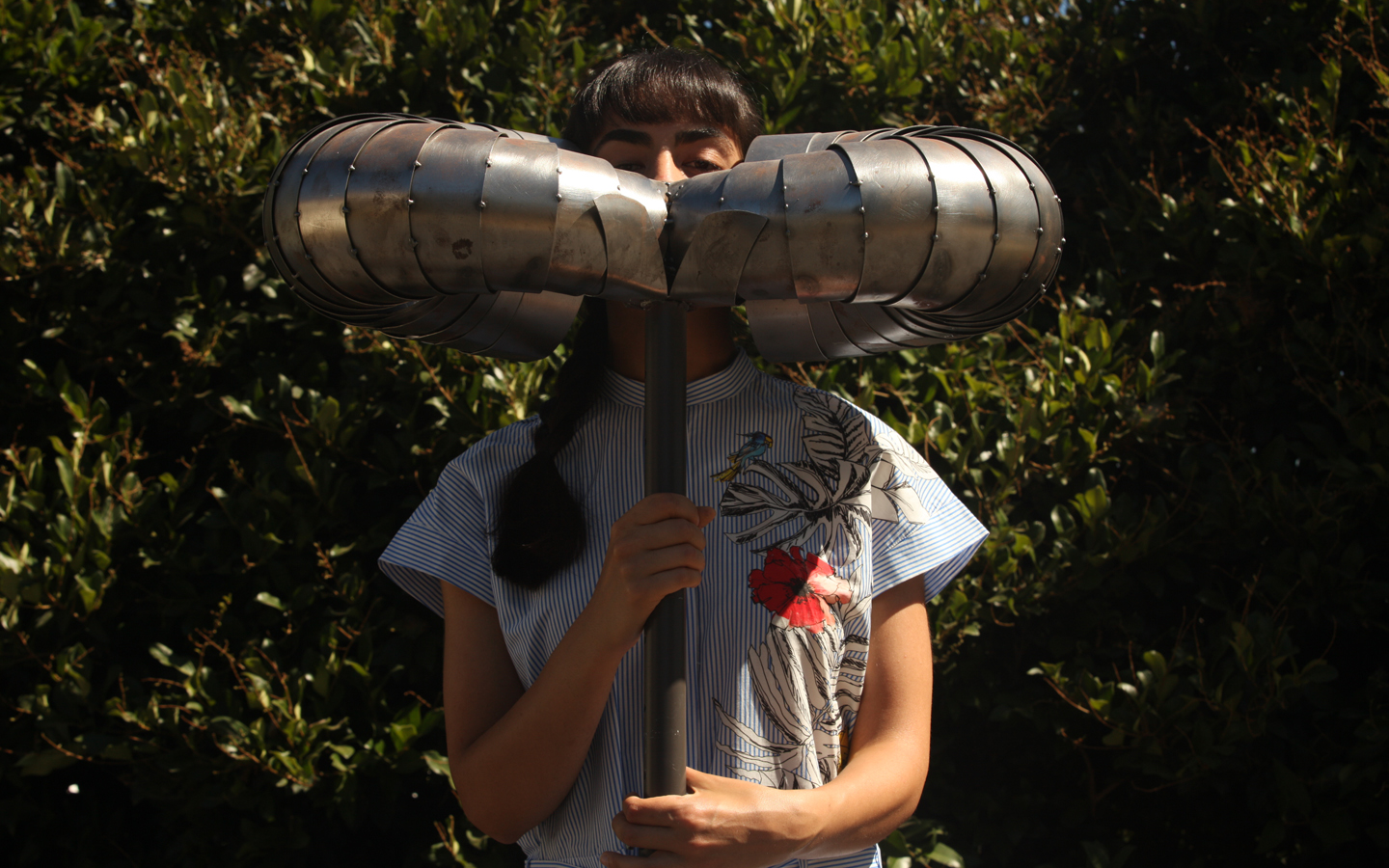
Damian Gomes
TEXT GENIE DAVIS
VISUAL LABKHAND OLFATMANESH
It’s easy to get absorbed in Damian Gomes’ work. When viewing his art, the word “intense” comes to mind. Take a piece like his The Latest Supper, a wonderfully evocative riff on The Last Supper. Here, the central figure is shrouded in flowers, and around him we have angels, clowns, and possibly even the devil. It’s a wonderful bunch of eccentrics and outliers in conversation, self-absorbed, while their leader is left to gestate in flora. Or look at St. Francis of Assisi, gilded cross practically glowing in his hands, formless angel on his shoulder.
His faces are not fully formed, leaving the viewer to etch in their own meaning, take on these characters, inhabit their dreams.
“I want the viewer to have their own experience. Have you ever stood in front of a Mark Rothko? His stuff isn’t figurative, mine is, but there is so much energy in the paintings, it’s almost as if you can hear it. It’s more difficult to capture with a figurative painting, but that’s what I’m after.”
Gomes says that every painting he creates builds on the last one, and indeed, there’s a progression in his work. We see him building crescendos of colors, shaping figures that seem related to other figures. Yet each piece is entirely fresh, and so freely formed that the work seems as if it were birthed before our eyes.
His art-making is an intrinsic part of himself, perhaps one that was inchoate until recently.
“I started painting about nine years ago as a side interest. I could always draw, but I decided to pick that up and give it a shot, and kind of fell into it,” he says unassumingly.
What he fell into was a deep sea of mysteriously beautiful images, some icon-like, if icons were very much of the moment. Many are spiritual, if not outright religious in nature; some are steeped in humor, as with Take Five, in which an angel and a devil slump across a table from each other, like two lawyers, one for the prosecution and one for the defense, waiting for their coffee after a big day in court. Regardless of the subject, Gomes’ work is something pulled from a fresh dream.
What inspires him is – everything. “Since my work is figurative, what draws me to these images, I can’t really be sure,” he relates. “I don’t know where they come from… it can be a family member, a homeless person sitting on a bench. It can be something only I see, but it doesn’t look like anything to someone else.”
Some paintings seem taken from the shadows, as does the grey-haired woman in her chair in Now We Wait. Others, like Black Madonna, seem to have erupted from color; in this stunning piece, the Madonna’s red dress literally spills out of the frame.
He paints on canvas but also works on wood, board and paper, usually in oil paint and acrylic, sometimes both in the same piece. “A lot of times I will paint on raw canvas primed with clear gesso or on linen. I like the exposed linen, but if you don’t prime, it could erode,” he explains. “I incorporate charcoal, pastel, chalk, but I usually do an underpainting of acrylic and oil as well.”
While his paintings seem suffused with a kind of inner glow, according to Gomes, “Sometimes my stuff gets pretty dark, sometimes I set out to do something brighter, and people think my work is dark. I try to work with a lighter palette at times.”
It is not just his palette or medium that can be diverse, it’s how he applies that medium. “I use my hands, all kinds of brushes, and a palette knife – really anything that holds paint. What I use, that depends on my approach, if I am doing something more delicate, maybe I use finer brushes for detail work. But usually it is everything, whatever I intuitively feel that I should use.”
Gomes was born in New Jersey and grew up in Phoenix. He arrived in Los Angeles last July, and had only been in the City of Angels – despite his propensity for painting them – on one other occasion.
“I enjoy living here. It’s new to me,” he says. “There is a bit of an art scene in Phoenix, but I wanted a bigger arena. LA is an art hub for sure.” He admits that being here affects his work, which isn’t a bad thing at all. “It feels different. I throw a little southwest into the mix, some contemporary abstract western figures, like the dark cowboy. I just like the West. I like the Wild West influence.”
But LA is hardly his only influence. “I paint all kinds of figures. I’ve been kind of into religious figures and saints. Something inspired me to do a whole series of saints.”
Perhaps he is guided by the hand of a higher being, and by the great artists that have gone before him.
“In terms of influences in art there are so many, if you look at my work, Willem de Kooning is a big influence, Rothko, Picasso – I was really influenced by him as a kid, Francis Bacon. Mostly I look for inspiration to the earth, love, death, family, all these things,” he says. “Just living is enough to generate images. It is interesting to look at art, and I love to, but I try to pull from other sources.”
Gomes is on a journey. His process is the road. “I can’t predict the future, but I just want to paint. So hopefully this life will allow me to do that forever. I think LA could be a good thing for me, give me exposure; but I also plan to travel, and when that time comes, I will.”
You may also like
April Bey
“I don’t feel it’s my job to originate answers or solutions. I ask questions. I present innoce
SoLA Gallery
The gallery recently launched programs including the Black Women Artists Advisory Committee, and an
Roksana Pirouzmand
Pirouzmand challenges our nonchalant attitudes about communication. Her performance art liberates th




